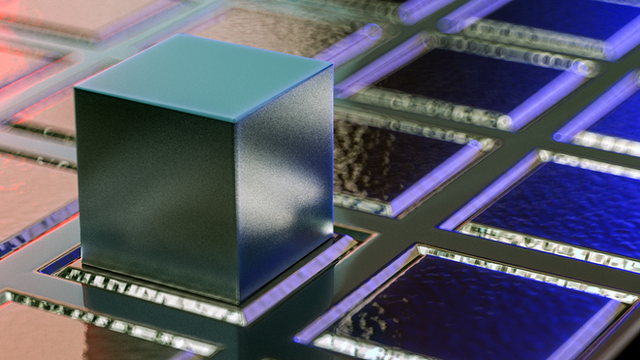HOME | DD
 MarceloMilani — Microcontroller
by-nc-sa
MarceloMilani — Microcontroller
by-nc-sa

#blender #chip #electronics #blendercycles #computer
Published: 2019-12-25 19:45:10 +0000 UTC; Views: 976; Favourites: 17; Downloads: 5
Redirect to original
Description
Made in Blender, rendered with Cycles.Related content
Comments: 7

looks very real, especially with the dispersion, it's like seeing it through a low-quality microscope
👍: 0 ⏩: 1

Thanks! (Saying that my render looks like something from a low-quality microscope is a compliment, right? 
I just think I exaggerated the bump on the chips too much.
👍: 0 ⏩: 1

Of course it's a compliment, photorealism is 20% modelling, 30% adding dirt and imperfections and 50% adding the imperfections of the cameras and their lenses (aka making a noise-free rendering, then adding noise in post 
also "low-quality" was easier to say than "not the most expensive", because those can cost up to thousands of dollars, from what I've seen
👍: 0 ⏩: 1

Are camera imperfections really that noticeable? Cameras nowadays do a good job eliminating the red-blue dispersion and also cancelling motion blur.
Also, I think you forgot adding the 50% for lighting and materials in your equation
👍: 0 ⏩: 1

Mostly yes, they are still noticeable if you are looking for them, unless if the rig is very high-end, like what you see in cinemas that can easily cost up to $50K for a basic rig.
Generally things start to fall apart when the lighting conditions are not perfect like not having enough light. If you want a good photograph in not-very-bright areas you can keep the shutter open for more time, making motion blur very noticeable (that's why phone cameras for example seem lagging in dark conditions), you can also increase the sensor's sensitivity, but you will have a lot of grain in your pictures, or you can open the diaphragm (aperture?) more and let more light enter, but DoF will be a lot more noticeable.
The chromatic aberration is indeed unnoticeable in most cases, but if you zoom-in you can see it in the edges, especially with high-contrast areas like trees and the sky. It's more noticeable with big sensors more than small phone cameras, and it's the lenses' fault. The average lens does a very good job, but does not eliminate it and it sometimes introduces vignetting
This picture is taken with a recent phone that has a very decent camera compared to phones under 200$. The lighting conditions were terrible (only lit by my computer screen, I can barely see anything with my own eyes), but I made it take the picture in 8 seconds to gather enough light. You can clearly see the noise even though the sensitivity was very low
Ah yes, photorealism is 20% modelling, 30% adding dirt and imperfections, 50% for lighting and materials, and 50% adding the imperfections of the cameras and their lenses
👍: 0 ⏩: 1

True, poor lighting really make camera imperfections very noticeable.
Thanks for the explanation!
And is that an anime that I see in the reflections?
👍: 0 ⏩: 1

I think it's Marge Simpson. That, or maybe a review or GDC talk about an unusual game, I can't really tell for sure lol
👍: 0 ⏩: 0


























